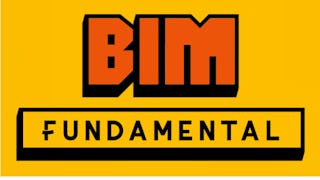The purpose of this course is to review the material covered in the Fundamentals of Engineering (FE) exam to enable the student to pass it. It will be presented in modules corresponding to the FE topics, particularly those in Civil and Mechanical Engineering. Each module will review main concepts, illustrate them with examples, and provide extensive practice problems.

6 days left: Get a Black Friday boost with $160 off 10,000+ programs. Save now.


(615 reviews)
Skills you'll gain
Details to know

Add to your LinkedIn profile
7 assignments
See how employees at top companies are mastering in-demand skills

There are 8 modules in this course
This section of the course will provide you with an overview of the course, an outline of the topics covered, as well as instructor comments about the Fundamentals of Engineering Exam and reference handbook.
What's included
3 videos3 readings
This module reviews the basic principles of mathematics covered in the FE Exam. We first review the equations and characteristics of straight lines, then classify polynomial equations, define quadric surfaces and conics, and trigonometric identities and areas. In algebra we define complex numbers and logarithms, and show how to manipulate matrices and determinants. Basic properties of vectors with their manipulations and identities are presented. The discussion of series includes arithmetic and geometric progressions and Taylor and Maclaurin series. Calculus begins with definitions of derivatives and gives some standard forms and computation of critical points of curves, then presents grad, del and curl operators on scalar and vector functions. Differential equations are calcified and to methods to solve linear, homogenous equations are presented. Fourier series and transforms are defined along with standard forms, and finally Laplace transforms and their inverse are discussed. In all cases, basic ideas and equations are presented along with sample problems that illustrate the major ideas and provide practice on expected exam questions.Time: Approximately 4.5 hours | Difficulty Level: Medium
What's included
15 videos2 readings1 assignment
This module reviews the basic principles of probability and statistics covered in the FE Exam. We first review some basic parameters and definitions in statistics, such as mean and dispersion properties followed by computation of permutations and combinations. We then give the definitions of probability and the laws governing it and apply Bayes theorem. We study probability distributions and cumulative functions, and learn how to compute an expected value. Particular probability distributions covered are the binomial distribution, applied to discrete binary events, and the normal, or Gaussian, distribution. We show the meaning of confidence levels and intervals and how to use and apply them. We define and apply the central limit theorem to sampling problems and brieflyt- and c2. We define hypothesis testing and show how to apply it to random data. Finally, we show how to apply linear regression estimates to data and estimate the degree of fit including correlation coefficients and variances.In all cases, basic ideas and equations are presented along with sample problems that illustrate the major ideas and provide practice on expected exam questions. Time: Approximately 3 hours | Difficulty Level: Medium
What's included
13 videos1 reading1 assignment
This module reviews the principles of statics: Forces and moments on rigid bodies that are in equilibrium. We first discuss Newton’s laws and basic concepts of what is a force, vectors, and the dimensions and units involved. Then we consider systems of forces and how to compute their resultants. We discuss the main characteristics of vectors and how to manipulate them. Then the meaning and computation of moments and couples. We discuss the concept of equilibrium of a rigid body and the categories of equilibrium in two dimensions. We show how to draw a meaningful free body diagram with different types of supports. Then how to analyze pulleys and compute static friction forces and solve problems involving friction. The concept and major characteristics of trusses are discussed, especially simple trusses, and we show how to analyze them by the method of joints and the method of sections. Finally, we analyze the geometrical properties of lines, areas, and volumes that are important in statics and mechanics of materials. These are moments of inertia, centroids, and polar moments of inertia of simple and composite objects. In all cases, basic ideas and equations are presented along with sample problems that illustrate the major ideas and provide practice on expected exam questions.Time: Approximately 3 hours | Difficulty Level: Medium
What's included
9 videos1 reading1 assignment
This module reviews the principles of the mechanics of deformable bodies. We first review the basic concepts of equilibrium and stresses and strains in prismatic bars under axial loading. Then we discuss the major mechanical properties of common engineering materials, particularly the diagrams for normal stress and strain leading to Hooke’s Law, and their relation to lateral strain through Poisson’s ratio. Shear stresses and their relation to shear strains are then presented. We then analyze in detail deformations and stresses in axially loaded members. This includes uniform and nonuniform loading for statically determinate and indeterminate structures. Thermal effects are then considered: expansion and contraction under temperature changes and the stresses that may develop both with and without prestresses. Stresses on inclined planes under axial loadings and the resulting maximum and minimum normal and shear stresses that result are then discussed. Torsion, the twisting of circular rods and shafts by applied torques is then analyzed. We show how to calculate the angle of twist and shear stress as functions of rod properties and shape under uniform and nonuniform torsion. Applications to power transmission by rotating shafts are presented. We then discuss how shear forces and bending moments arise in beams subject to various loading types and how to calculate them. This is then generalized to local forms of the equilibrium equations leading to rules for drawing shear force and bending moment diagrams. Finally, we compute bending stresses in beams. Strains due to bending and their relation to curvature are first discussed. This is used to compute the bending stresses and their relation to the applied bending moment and beam material and cross sectional properties. This includes a review of computation of centroids and moments of inertia of various areal shapes. We complete this module with a discussion how shear stresses arise in beams subject to nonuniform bending and how to compute them. In all cases, basic ideas and equations are presented along with sample problems that illustrate the major ideas and provide practice on expected exam questions. Time: Approximately 4 hours | Difficulty Level: Medium
What's included
14 videos2 readings1 assignment
This module reviews the basic principles of fluid mechanics particularly the topics covered in the FE Exam. It first discusses what a fluid is and how it is distinguished from a solid, basic characteristics of liquids and gases, and concepts of normal and shear forces and stresses. The major fluid properties are then discussed. Next fluid statics are addressed: pressure variation in homogeneous and stratified fluids and application to manometers; forces on submerged plane surfaces and buoyancy forces on fully and partially submerged objects.Flowing fluids are then covered. This includes the equations for conservation of mass (the continuity equation) and energy (the Bernoulli equation). These are then applied to velocity and flow measuring devices: the Pitot tube, and Venturi and orifice meters.The final topic is similitude and dimensional analysis. This includes concepts of fundamental dimensions and dimensional homogeneity, the Buckingham Pi theorem of dimensional analysis, and the conditions for complete similitude between a full-scale prototype flow situation and a small scale model.In all cases, basic ideas and equations are presented along with sample problems that illustrate the major ideas and provide practice on expected exam questions.Time: Approximately 6 hours | Difficulty Level: Medium
What's included
19 videos1 reading1 assignment
This module applies basic principles of fluid mechanics to practical problems in hydraulics, hydrology, and groundwater flow. We first discuss the generalized and one-dimensional momentum theorem and apply it to various typical problems. Flow in pipes and non-circular conduits is discussed beginning with the Bernoulli equation accounting for energy losses and gains. Calculation of head loss due to friction and minor losses due to valves and other accoutrements are presented. Friction losses are calculated for laminar Poiseuille flow and turbulent flow using the Moody chart; examples include computation of pressure drop in laminar pipe flow and turbulent water flow. Methods to calculate flow in pipe networks consisting of multiple connecting pipes and other fittings is then discussed with examples for parallel pipes. Pipes and turbines are then discussed along with their basic equations and definitions. Characteristic curves, especially of centrifugal pumps, are presented and it is shown how to match a pump to a system head.Flow in open channels are discussed including classification of flow types and prediction of uniform flow by the Manning equation. The use of specific energy concepts to solve gradually varying flows, and the importance of the Froude number and sub and supercritical flows are presented. Predictions of hydraulic jumps and flow over weirs are given.Hydrological principles include predictions of surface runoff by the curve number method and peak runoff by the rational formula. Groundwater principles include Darcy’s law for flow through porous media and prediction of drawdown by wells in confined and unconfined aquifers by the Dupuit and Thiem equations.In all cases, basic ideas and equations are presented along with sample problems that illustrate the major ideas and provide practice on expected exam questions.Time: Approximately 3 hours | Difficulty Level: Medium
What's included
12 videos1 reading1 assignment
This module reviews basic principles of the structural analysis of trusses and beams. It builds on material covered in Statics (Module 6) and Mechanics of Materials (Module 8). We first review the conditions for static equilibrium, then apply them to simple trusses and beams. We then consider the deflections of beams under various types of loadings and supports. We derive the differential equations that govern the deflected shapes of beams and present their boundary conditions. We show how to solve the equations for a particular case and present other solutions. The method of superposition and its application to predicting beam deflection and slope under more complex loadings is then discussed. Finally the conditions for static determinacy and indeterminacy are presented along with example applications to trusses and beams. In all cases, basic ideas and equations are presented along with sample problems that illustrate the major ideas and provide practice on expected exam questions.Time: Approximately 2.5 hours | Difficulty Level: Medium
What's included
8 videos2 readings1 assignment
Instructor

Offered by
Explore more from Mechanical Engineering
 Status: Preview
Status: PreviewUniversity of Leeds
 Status: Preview
Status: PreviewStarweaver
 Status: Preview
Status: PreviewNational Taiwan University
 Status: Free Trial
Status: Free TrialL&T EduTech
Why people choose Coursera for their career




Learner reviews
615 reviews
- 5 stars
77.23%
- 4 stars
16.42%
- 3 stars
2.92%
- 2 stars
1.13%
- 1 star
2.27%
Showing 3 of 615
Reviewed on Nov 27, 2019
Very good contents and very simple, helps you to study smoothly and the instructor is professional
Reviewed on Aug 16, 2020
Almost 8 years after I graduated I found this due to the pandemic and now I'm looking forward to taking the FE exam
Reviewed on Oct 28, 2025
Fundamental of engineering exam, it was a very knowledgeable and informative session for learning purpose.

Open new doors with Coursera Plus
Unlimited access to 10,000+ world-class courses, hands-on projects, and job-ready certificate programs - all included in your subscription
Advance your career with an online degree
Earn a degree from world-class universities - 100% online
Join over 3,400 global companies that choose Coursera for Business
Upskill your employees to excel in the digital economy
Frequently asked questions
To access the course materials, assignments and to earn a Certificate, you will need to purchase the Certificate experience when you enroll in a course. You can try a Free Trial instead, or apply for Financial Aid. The course may offer 'Full Course, No Certificate' instead. This option lets you see all course materials, submit required assessments, and get a final grade. This also means that you will not be able to purchase a Certificate experience.
When you purchase a Certificate you get access to all course materials, including graded assignments. Upon completing the course, your electronic Certificate will be added to your Accomplishments page - from there, you can print your Certificate or add it to your LinkedIn profile.
Yes. In select learning programs, you can apply for financial aid or a scholarship if you can’t afford the enrollment fee. If fin aid or scholarship is available for your learning program selection, you’ll find a link to apply on the description page.
More questions
Financial aid available,

